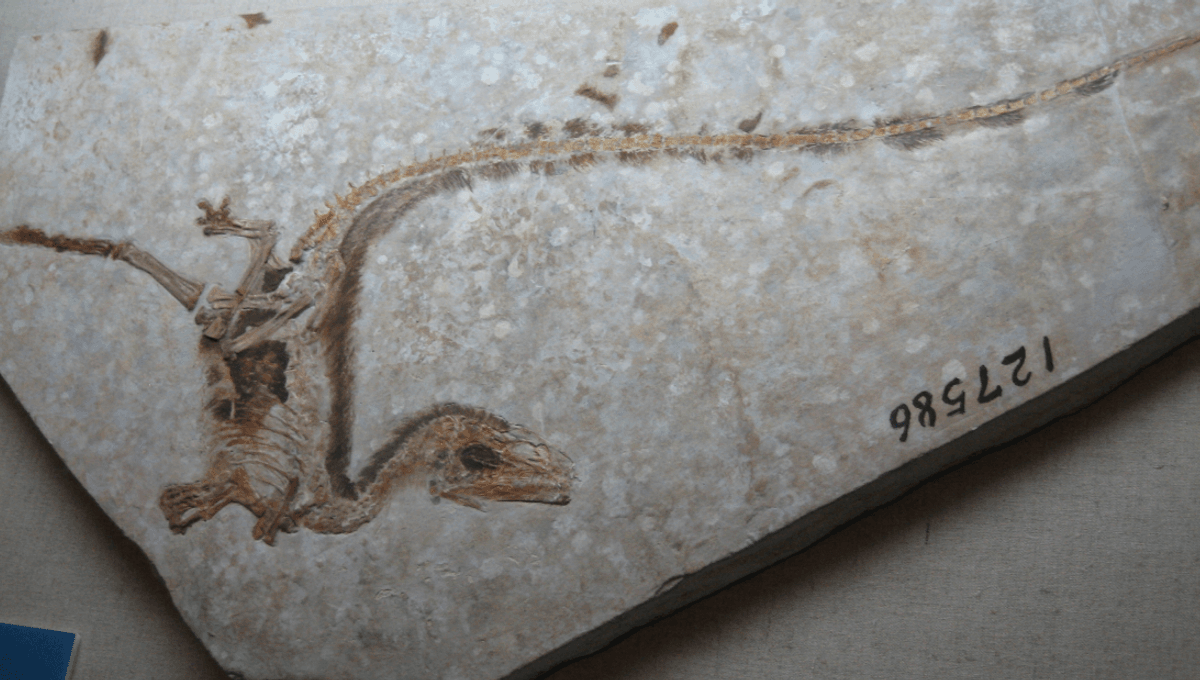
Look out the window long enough and you’ll see a modern-day dinosaur making use of its feathers to soar across the sky. It’s impressive, but is flying what feathers first evolved to do? And where in the evolutionary tree do they first emerge?
ADVERTISEMENT
A new study led by Professor Paul Barrett and Professor Xu Xing of the Natural History Museum, London, reviewed the evidence on when and where feathers evolved. By examining fossil feathers, their diversity, function, and relationship to reptilian scales, they aimed to uncover the evolutionary origins of avian feathers.
A pivotal fossil in the feather debate was Sinosauropteryx, a non-avian dinosaur with beautifully preserved feathers. Its discovery in the 1990s proved that feathers existed beyond birds’ closest relatives, but the question remains – how far back do feathers go? Do feathers predate all dinosaurs, or did different groups evolve them independently?
“While dozens of feathered dinosaurs have been identified since Sinosauropteryx was first unveiled in the 1990s, they’re mainly meat-eaters that are close relatives of birds,” said Barrett in a statement. “Everyone agrees that these dinosaurs had feathers, but there’s little consensus beyond that.”
“To settle these disagreements, we need more fossils and to define what a feather is. If we can sort this out, it could reveal where feathers first came from and whether they predate the dinosaurs themselves.”
Barrett and Xing’s review found that feathers evolved before birds and predated flight. The first feathers were likely simple, fur-like filaments that later evolved into branched structures, eventually leading to aerodynamically useful feathers.
ADVERTISEMENT
One of the biggest questions concerns pterosaurs and whether they had complex feathers or something more simplistic. If their structures were indeed feathers, that would suggest an ancestor common to both dinosaurs and pterosaurs had feathers, meaning some later groups must have lost them. If not, then it could be that simple filamentous structures evolved independently in multiple groups – an example of convergent evolution.
Many questions remain around the feather debate, and it seems finding out which of these scenarios is accurate is going to require fossils. Lots of fossils.
“We need to find new sites with fossilised feathers, particularly from the Jurassic and the Triassic,” said Barrett. “The Triassic is especially important, as finding feathered dinosaurs at this early time in dinosaur evolution would suggest that all dinosaurs had an ancestor with feathers.”
“If feathered dinosaurs aren’t found among early dinosaurs, then it makes it more likely feathers were an innovation among later groups.”
ADVERTISEMENT
So, what are you waiting for? We’re going fossil hunting.
The study is published in the journal Biology Letters.
Source Link: Did Anything Have Feathers Before The Dinosaurs?